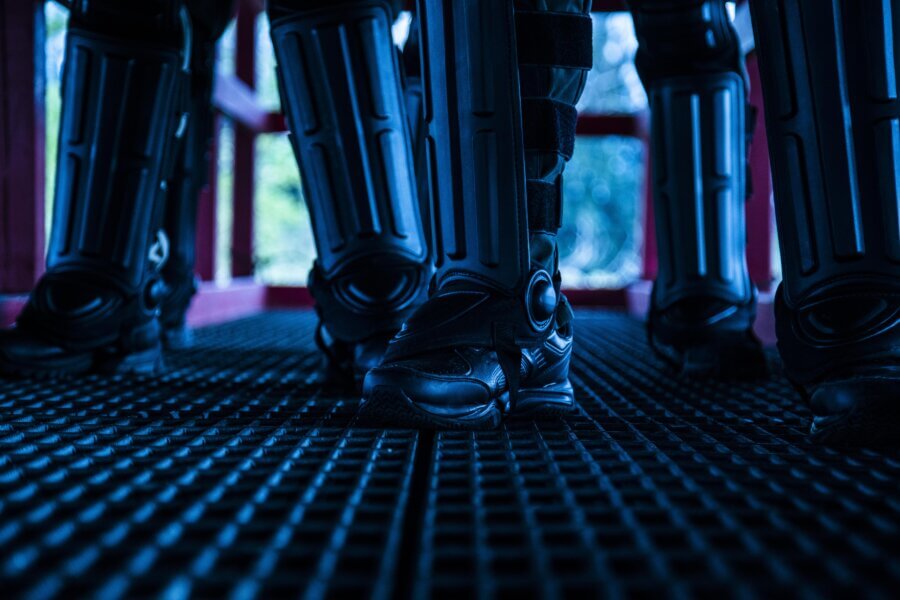
Polypropylene in Equipment for Law Enforcement Safety
Humans have been covering themselves with protective gear throughout their recorded history. Think of a medieval knight in a suit of metal armor, or a Roman centurion thousands of years ago. The goal of the protective gear has always been the same. The more you protect your limbs, torso, and head during a fight, the more likely you will go home at the end of the day with everything still attached. So, there’s nothing “new” to police riot gear. It’s there to protect your officers and get them home safely at the end of the day.
What has changed more recently in terms of riot gear safety is the quality of its components.
We’re specifically talking about polypropylene, a key component in Haven Gear riot suits.
Lightweight Protection Properties
Polypropylene is a thermoplastic polymer. Its low density makes it one of the lightest commodity plastics. Heavier protective gear would restrict your officers’ movement during a crowd control situation. The lightweight properties of polypropylene keep our riot suits flexible and agile, which allows your officers to move around more easily.
Weight is also a significant factor when considering riot gear. The heavier an officer’s gear is, the more quickly they will become fatigued. As we all learned in 2020, crowd control situations can occur for many hours. A lighter suit of polypropylene riot gear allows your officers to stay on their feet and protect public safety for extended periods.
Polypropylene also provides improved comfort and wearability. It’s resistant to moisture and environmental stressors. The lightweight and durable materials strike an outstanding balance between protection and practicality.
Fire-Resistant Safety Properties
Some of the nastier riots that we’ve seen can involve rioters throwing flaming objects or shooting fireworks at officers. Our suits are made with molded polypropylene and nylon to provide fire-resistant qualities. That doesn’t mean “fire-proof.” Polypropylene will degrade at 320 degrees Fahrenheit and can burn or melt at higher temperatures. The components make our suits much less likely to catch on fire, and in the event that they do, it’s much easier to simply pat the flames out.
Our suits meet the fire-resistant qualities set in ISO 6941, the international standard for measuring the flame-spreading properties of textiles. They also adhere to the requirements of British Standard BS 7971-3:2002 and the German standard DIN 53438.
Blunt Force and Stab Resistance Gear
Polypropylene has shock-absorbent properties that make it resistant to blunt force and stabbing with sharp objects. The rigid molded polypropylene panels distribute the impact energy if an officer is struck. This doesn’t make an officer impervious to damage if they get hit with a pipe or a brick flying through the air. You’ll still feel it if you get hit. However, the force distribution can mean the difference between a bruise and a broken bone. Most of us would choose the bruise in that situation, right?
The same principle applies to knives or sharp objects. The rigid panel enforcement that polypropylene gives to an officer can reduce the penetration depth of sharp objects. When the force is spread across a broader surface, it reduces the concentrated pressure from stabbing attempts.
Keep in mind, however, that our suits are designed to be highly customizable to meet the threats that your officers face. Our Enforcer suit includes a multi-function ballistic carrier. This allows officers to choose layers of protection, such as ballistic plates or panels, and insert them into the suit.
Chemical Resistance
Crowd control situations can also involve acids, solvents, or other chemicals that present a danger to your officers. Polypropylene doesn’t readily absorb these materials or degrade under them. It provides a protective layer for an officer’s skin. Your team might have to resort to non-lethal measures like tear gas or pepper spray. The suit protects against those as well.
We’ve revolutionized the modern riot suit gear with our design to make it as functional and durable as possible for officers on the front lines.